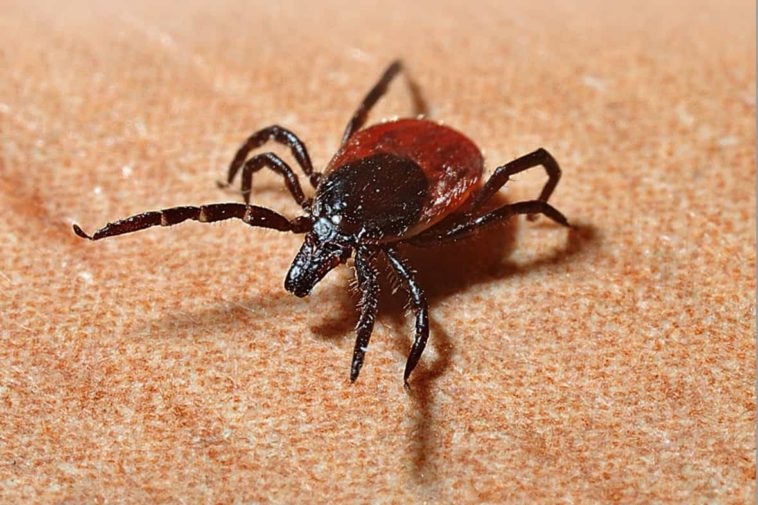Lyme disease is typically commonly found in Eastern forested regions of the United States. But recently scientists found disease-carrying ticks near the beaches in Northern California. Ticks like tall grasses, weeds, shrubs, and wooded areas.
In this article, we take a look at Lyme Disease, the signs of Lyme disease, who is most at risk, how to prevent it, and current treatments for both initial and chronic instances of the disease.
What is Lyme Disease

Lyme disease in humans is a condition caused by bacteria referred to as Borrelia burgdorferi. This illness occurs when a person is bitten by a tick that is infected with the bacteria. The tick does not produce bacteria, but it is a carrier.
Many people are unaware they have been bitten by a tick and never make the connection between the bite and subsequent symptoms. Unfortunately, many health care providers also don't consider the possibility and don't perform the correct tests to determine if the infection exists.
Other Tick-borne Diseases
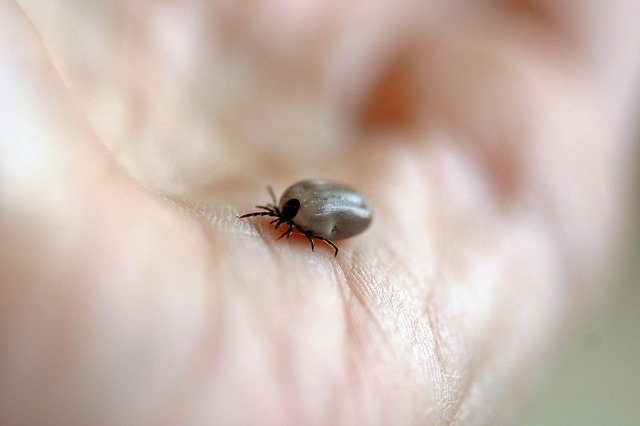
What are Ticks?
Ticks are small parasites that suck blood from a host. Ticks are not insects, but have eight legs and are from the same family as spiders. There are hundreds of tick species in the world.
Most ticks are not a threat to human health. Yet, some ticks can cause severe irritation and others are dangerous.
Depending on the tick species, the host can be human or animal, including birds, mammals, and even cold-blooded reptiles and amphibians. Different tick species target different hosts.
How do Ticks Spread Disease
Ticks do not stay permanently attached to one host. When they choose a human host they bury their mouth into the skin to suck blood and keep themselves alive.
The volume of blood they consume is insignificant, but what is more important is what they leave behind.
Ticks Can Be Disease Carriers
The greatest threat to your health is not from the ticks themselves, but the blood-borne diseases they carry and transmit. Some tick species are know carriers of disease such a tick typhus and Lyme disease.
If a tick bites a person who is already infected with some type of blood-borne disease, then the disease can be easily transferred to the next host the tick attaches to.
Experts Disagree
There is increasing contention about which ticks can transmit Lyme disease, and in which countries it can occur.
It was previously thought that only one or two species of ticks in North America, and possibly one in Europe could transmit the disease. This is still the official viewpoint of many health authorities. But many claims are made in countries that are not in North America or Europe.
Blacklegged Ticks
Most health care authorities consider that Lyme disease is transferred in North America by Blacklegged ticks, also known as deer ticks or bear ticks. Their botanical name is Lxodes scapulars.
The specific pathogen that is responsible for Lyme disease that is transferred by the tick is called Borrelia burgdorferi.
Many people who see a rash on their skin assume that it is just an insect bite that will heal in a short time. Yet, if you live in a high-risk area, there's the possibility that it may develop into Lyme disease, and you should have it tested.
Kids Face a Higher Risk of Getting Lyme Disease
Since kids play outside in grassy areas more than most adults, their chances of being infected with Lyme disease by a tick is higher.
Children are more likely to suffer from central nervous system infections too, and if the tick is not immediately removed properly, the danger of infection is imminent.
It is believed that pathogen transfer is not immediate and that the longer the tick is attached the greater the risk.
Under spring-like conditions tick numbers can explode. In known times of high tick activity, it is smart to do a body check on kids after playing outdoors.
Lyme Disease is Not Contagious

There is no proof that Lyme disease can be transmitted through human to human contact. It is considered to be a blood-borne disease that depends on ticks for transmission.
It is not considered to be contagious via direct contact. This means that Lyme disease cannot be transferred through kissing, touching, or sexual intercourse.
Testing For Lyme Disease
You can only have a confirmed diagnosis of Lyme disease through a blood test, although symptoms may be an indication.
The test measures IgG and IgM antibodies to the bacteria that cause Lyme disease (Borrelia garinii, Borrelia afzelii, and Borrelia burgdorferi).
If you think you have been exposed to an infected tick and are showing symptoms, a Lyme disease blood test can help give you answers.
Lyme Disease is the Great Imitator

Lyme disease is ‘the great imitator' of other types of diseases.
Many people have been misdiagnosed as having either chronic fatigue syndrome (CFS), lupus, multiple sclerosis, fibromyalgia, Parkinson's disease, Lou Gehrig's disease, or rheumatoid arthritis.
Treatments for an incorrect diagnosis may give some short-term relief from some symptoms but do not fix the underlying problem. Also, it is likely that unnecessary pharmaceuticals will be prescribed.
If a blood test is done in the early stages of the infection, the bacteria that causes Lyme disease may not be apparent yet. Because of this, antibiotics are often given immediately, especially when a rash is present.
Often people who show a negative result will have another test after a few weeks to make sure the Borrelia burgdorferi is gone.
What Happens When a Pregnant Woman Contracts Lyme Disease?

If a pregnant woman is bitten by a tick and contracts Lyme disease, it can result in an infection of the placenta. Her unborn child then faces the risk of contracting the disease. There are cases of still birth caused by Lyme disease, but such cases are uncommon.
No cases have been reported regarding dangerous effects to the fetus when the mother receives treatment immediately. Plus, no cases have been reported this far regarding transfer of the disease through breast feeding.
Common Lyme Disease Symptoms
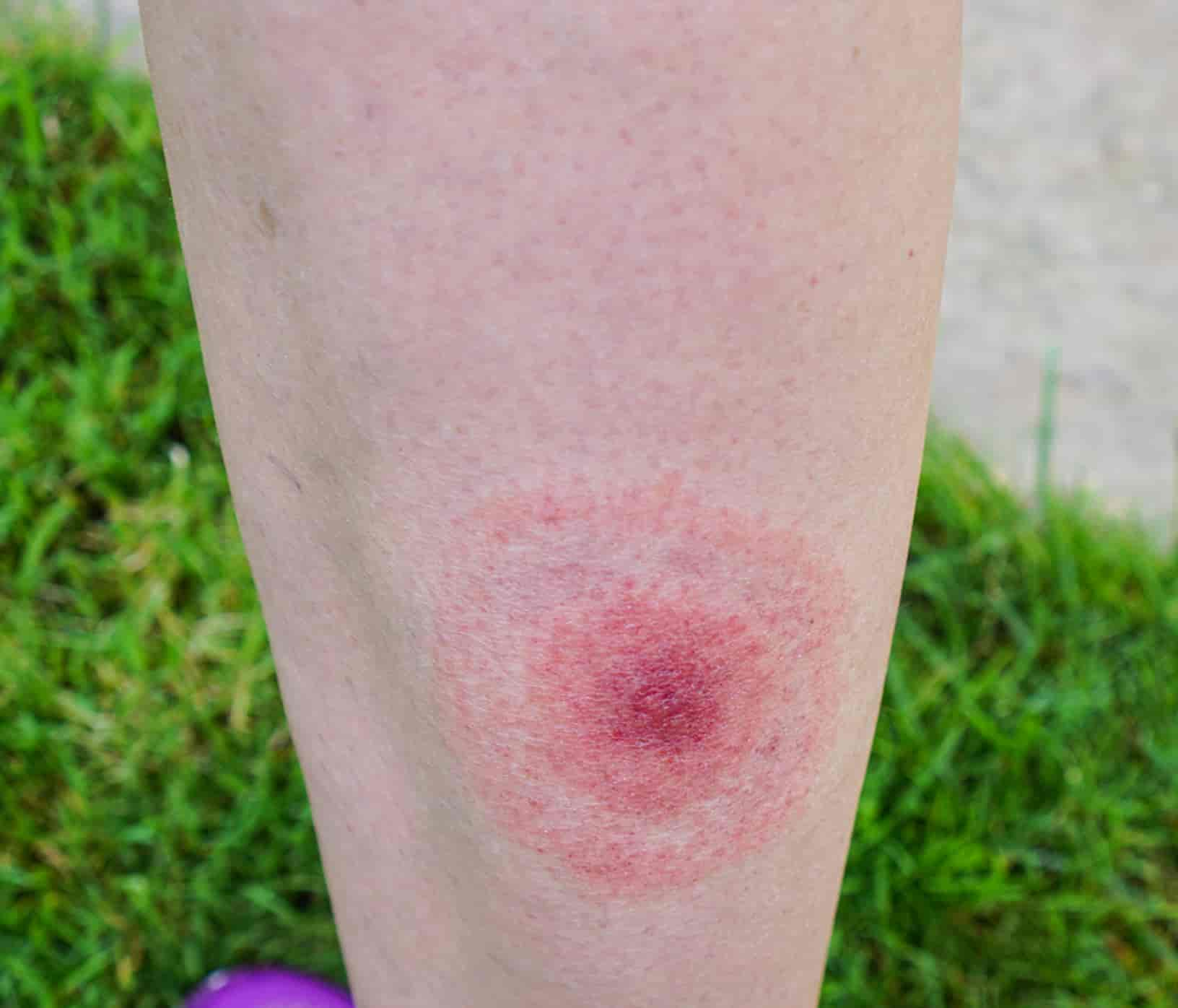
Initial Signs
Your first three to thirty days after experiencing a bite from a tick carrying Borrelia burgdorferi will result in several symptoms which may include one or more of the following:
- Flu-Like Symptoms
Flu-like symptoms include sweats, joint pain, fatigue, muscle aches, chills, and fever.
- The ‘Bulls-Eye’ Rash
The so-called bulls-eye rash may appear on any part of the body. The term “bull’s eye” is used to describe the rash that looks like a bull’s eye on a dartboard. The area which has been bitten by the tick is red and the edges look a bit swollen.
This rash feels warm when touched although reports of it being painful or itchy are rare. However, some people develop a different kind of rash, while others do not see any rash on their skin at all.
Months After the Tick Bite
A few months after the tick bite, more symptoms will often appear. They may include:
- Additional bulls eye rash on any part of the body
- Neck stiffness
- Severe headaches
- Severe pain and swelling of the joints
- Facial drooping
- Irregular heart palpitations
- Pain in the nerves, muscles, tendons and bones
- Shortness of breath
- Dizziness
- Shooting pain in the lower and upper extremities
Some people infected with Lyme disease may also develop:
- Eye inflammation
- Fever
- Fatigue
- Liver inflammation.
However, these symptoms are not as common and rarely occur.
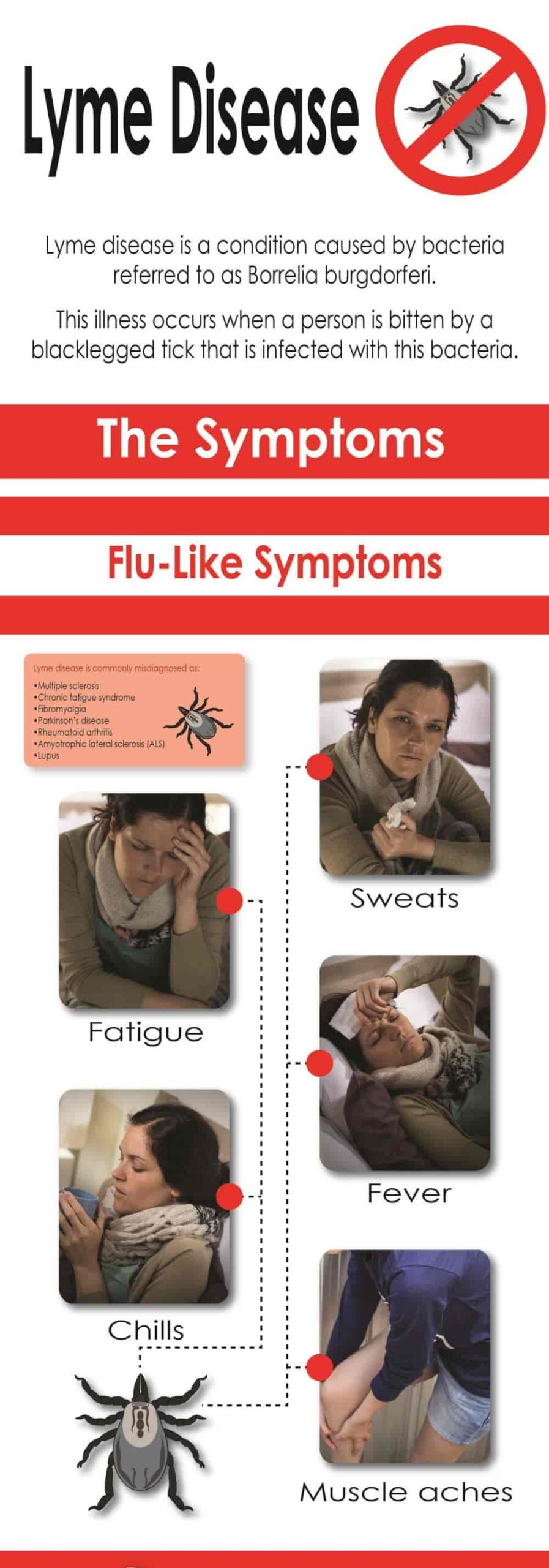
Who Is Most at Risk of Being Bitten by Infectious Ticks?
People who are fond of going to woodlands in North America, UK and some parts of Europe are at a higher risk of being bitten by ticks and suffering from Lyme disease.
Most cases of tick bites have been reported during late spring, autumn or early summer. These are the times of the year when people love to partake in outdoor activities. It is also the times when tick activity is highest.
While the risk may be lower, do not assume there is zero risk of contracting Lyme disease if you don’t spend time outdoors. Experts report that the ticks which are carriers of Lyme disease can also be found on birds, chipmunks and mice.
This means that even if you spend most of your time at your home you cannot be guaranteed that you will not get bitten by a tick and risk contracting Lyme disease.
How Can You Avoid Contracting Lyme Disease?
At present, a vaccination for Lyme disease is not yet available. However, you can certainly take some precautions to reduce the chance of being bitten by ticks.
Here are a few suggestions:
If you are away from home in the outdoors:
- Wear light-colored pants, and tuck the bottom of your pants into your socks (to stop them crawling up your leg) and a long-sleeved shirt. This will help you to spot black-legged ticks on your clothing.
- It will also help to spray your clothes and shoes with permethrin repellent and apply insect repellant lotions directly onto your skin.
- When you arrive home or even before getting inside the car, check for any presence of ticks on your body or clothing.
- Carefully inspect your skin folds such as your armpits, waistband, groin, head, scalp and neck to see if there are ticks hiding.
- Walk along the footpaths as much as possible and avoid walking in longer grass and brushing through shrubs.
- Check your pets’ skin and fur and make sure they don’t bring ticks back home from your adventures.
If you are at home and outdoors:
- Check your pets as above.
- Don’t let grass grow too long in your yard, regularly mow your lawn.
- Rake fallen leaves as soon as possible as ticks can be found in leaf litter.
- Stack wood in a dry place.
Treatment for Lyme Disease
Lyme disease can be treated with antibiotics, especially if diagnosed early.
Those who develop chronic Lyme disease may require several different types of treatment. Treating Lyme disease right away increases your chances of avoiding other serious symptoms that can develop if it is left untreated.
If you notice a tick bite episode and you are in a high-risk area, consult your doctor right away.
If you start experiencing unexplained symptoms such as nerve pain, joint pain, excessive fatigue, and heart problems, or as mentioned earlier, flu-like symptoms and a rash, Lyme disease may be a suspect, so test yourself early.
Oral Antibiotics (for early stages of Lyme disease)

Oral antibiotics are used as a standard treatment for the early onset of Lyme disease.
These oral antibiotics include doxycycline which can be given to children above 8 years old and adults. Cefuroxime and amoxicillin are more often prescribed to pregnant women, breastfeeding mothers and younger children.
Lyme disease patients may undergo a 10, 14 or 21-day antibiotic treatment. It is very important to complete the prescribed course. However, the International Lyme and Associated Disease Society or ILADS argue that a short course of antibiotics may only be beneficial for treating acute infections, and may not be sufficient to overcome chronic instances of Lyme disease.
Intravenous Antibiotics
If Lyme disease has progressed and has affected the central nervous system, intravenous antibiotics will then be recommended. This treatment may last for up to 28 days.
Post-Treatment Lyme Disease Syndrome
Even after undergoing a thorough treatment plan for Lyme disease, some patients report experiencing ongoing fatigue and muscle aches and pain. Experts say these continuing symptoms occur as part of ‘Post-treatment Lyme disease syndrome’.
This is because some people tend to develop an autoimmune response that leads to the continuing occurrence of some of their Lyme disease symptoms. However, more studies are still needed to be able to shed light on the continuing occurrence of Lyme disease symptoms that follow a treatment program.
It is an unfortunate statistic that many diagnosed Lyme disease patients can’t even recall being bitten by a tick or seeing any bulls-eye rash on their skin, and have no idea how or when they have been infected.
Due then to a late diagnosis, many of them experience symptoms of chronic Lyme disease such as arthritic pain, memory loss, brain fog and chronic fatigue.
However, since these symptoms are also present in the other types of illnesses previously mentioned, many patients were never immediately checked for Lyme disease, and this now causes them continuing health problems.
Side Effects of Treating Lyme Disease
Undergoing multiple courses of antibiotics may cause side effects which are called the “Herxheimer reaction”. This is characterized by a detox-like reaction, and can cause the patient to experience symptoms such as mild to severe diarrhea.
Another side effect of taking antibiotic treatments for a lengthy period is the overgrowth of yeast in the person’s gut.
Despite the side effects, undergoing a longer course of antibiotic treatment has provided promising results for many Lyme disease sufferers.
The Use of Natural Treatments for Lyme Disease
Many sufferers, especially those with chronic instances of Lyme disease, have found traditional treatments ineffectual. A range of natural treatments has been tried and many claim to have overcome their condition through these means.
The use of antimicrobial herbs for treating Lyme infections has been shown to be effective in providing relief from chronic Lyme disease. The risk of suffering from side effects is lower than from prescribed antibiotics, however most doctors will favor traditional pharmaceutical solutions.
Nutritional therapy, lifestyle counseling and natural detoxification methods have played their part in a natural treatment plan. Most of these natural treatments can also be used in conjunction with an antibiotic treatment program.
Lifestyle Suggestions
Many alternative health practitioners suggest avoiding alcohol and all sugars because they feed the bacteria associated with Lyme disease. Eating alkaline foods (most green vegetables, complex grains, almonds, yams, lentils, squash) can help balance pH levels if low.
Supplements
Nutritional supplements can help boost immune function, which Lyme disease impairs.
Steven J. Bock, M.D. Medical Director of the Center for Progressive Medicine, in Albany, New York recommends anti-inflammatory fatty acids like fish oil and borage oil, a high -potency multivitamin/mineral formula, coenzyme Q10 (to shore up cellular energy levels) vitamin B, biotin, and the amino acid L-Carnitine.
Magnesium is also useful for headaches, tremors, twitches, cramps, muscle soreness, general weakness, and heart strain cause by Lyme.
Herbs
The following herbs can be used safely as a self-care protocol. Dr. Bock recommends Astragalus, Ginseng, and Reishi, and Cordyceps mushrooms for general immune support.
Echinacea
Also, research shows that the root of Echinacea is the most effective form when it comes to battling microbes. Experts usually recommend 900 mg of Echinacea to be taken twice a day.
Stress Reduction
Because stress diminishes immunity and energy levels, it is essential that people with Lyme disease manage stress levels.
Acupuncture
Acupuncture or Acupressure combined with physical therapy can reduce the pain associated with Lyme disease.
Bodywork
Bowen Therapy, due to its ability to balance and restore proper functioning of the autonomic nervous system can be very effective in relieving the symptoms of Lyme Disease.
Of course, some Lyme disease patients have co-existing medical conditions which must also be addressed, regardless of which course of treatment they take.

Conclusion
If you have reason to suspect you may have contracted Lyme disease, see your doctor as soon as possible. If a blood test confirms it, you can undertake a treatment program to prevent it from worsening.
If you do have Lyme disease and it is left untreated, the symptoms will not go away and almost certainly deteriorate.
There is much ongoing discussion regarding both the incidence and treatment of the disease. It is certain that over the next few years this will increase, hopefully providing further enlightenment into overcoming the disease and its symptoms.
Prevention does not have to mean locking children and self inside your house; but if you are in a higher-risk area, be vigilant in checking for ticks on your own body and your children’s too.
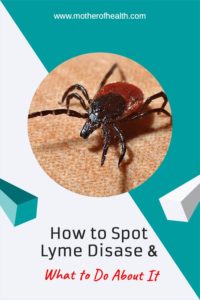
Don't forget to follow us on Pinterest. Thank you for your time and reading.

